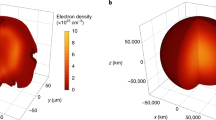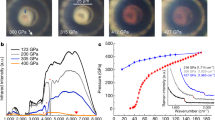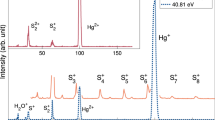Abstract
IN the last few months we have been engaged in observations of electron discharges in hydrogen which appear to supplement those described by Prof. Harvey B. Lemon in NATURE of January 26. The region investigated by us is that of lower values of voltage, discharge current and gas pressure, our upper limits being 60 volts, 10 milliamperes, and 0.8 mm. of mercury respectively. Our source of electrons consisted of a filament either of tungsten or of barytacoated platinum about 2 cm. from a flat circular nickel anode of 2.5 cm. diameter provided with a central rectangular slit, the whole being suitably enclosed in an evacuated transparent quartz tube.
This is a preview of subscription content, access via your institution
Access options
Subscribe to this journal
Receive 51 print issues and online access
$199.00 per year
only $3.90 per issue
Buy this article
- Purchase on Springer Link
- Instant access to full article PDF
Prices may be subject to local taxes which are calculated during checkout
Similar content being viewed by others
Author information
Authors and Affiliations
Rights and permissions
About this article
Cite this article
RICHARDSON, O., TANAKA, T. The Continuous Spectrum of Hydrogen. Nature 113, 192–193 (1924). https://doi.org/10.1038/113192c0
Issue Date:
DOI: https://doi.org/10.1038/113192c0
Comments
By submitting a comment you agree to abide by our Terms and Community Guidelines. If you find something abusive or that does not comply with our terms or guidelines please flag it as inappropriate.



